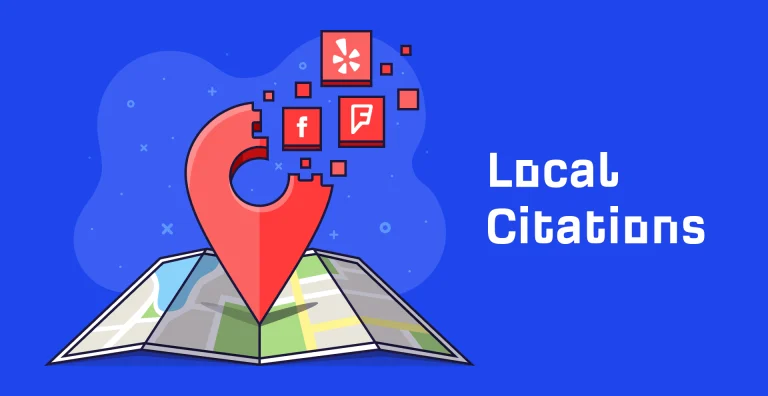Is Mobile Optimization Important for Local SEO?
In the sunburned land of Australia, where kangaroos hop and the Wi-Fi flows freely, there’s a digital revolution taking place. No, it’s not the latest season of “MasterChef Australia” or another Chris Hemsworth movie. It’s the rise of mobile search, and it’s changing the way Aussies find their local fish and chip shop, yoga studio, or the nearest mechanic. But the burning question on every local business owner’s mind is: “Is mobile optimization really that important for local SEO?” Well, mate, buckle up, because we’re about to dive deep into the digital outback to find out!
Are you looking for experts in local seo services? Go local first are here to help.
Understanding Mobile Optimization
What is Mobile Optimization?
Mobile optimization, in its simplest form, is like giving your website a “fit for mobile” certificate. It ensures that visitors who access your site from mobile devices have an experience optimized for their device. Think of it as tailoring a suit. You wouldn’t wear a suit tailored for Hugh Jackman if you’re more of a Cate Blanchett, right? Similarly, a website designed for desktop might not look or function as well on a mobile device.
But wait, there’s a twist! Mobile optimization is not just about making things look pretty. It’s also about functionality. A mobile-optimized site ensures that everything from the navigation menu to the contact form works seamlessly on smartphones and tablets.
Why Mobile Optimization Matters for Websites?
Imagine this: You’re out and about in Sydney, and you suddenly crave a flat white (because, Australia). You quickly whip out your smartphone, type in “best flat white near me,” and click on the first link that pops up. But, oh no! The website takes ages to load, the images are larger than the Opera House, and you can’t even find the cafe’s address. Frustrating, right?
That’s precisely why mobile optimization matters:
- User Experience on Mobile Devices: Over 80% of Aussies own a smartphone, and they’re not using it just for Snapchat or to Instagram their brunch. They’re searching for local businesses, reading reviews, and making purchases. A mobile-optimized site ensures they can do all this without wanting to throw their phone into the Great Barrier Reef.
- Mobile Search Ranking Factors: Google, the big boss of search engines, has made it clear: if your site isn’t mobile-friendly, it’s going to struggle in the rankings. And in the world of SEO, if you’re not on the first page, you’re practically invisible.
- Impact on Website Speed and Performance: A site optimized for mobile loads faster and performs better. And in the digital age, speed is the name of the game. A delay of even a few seconds can lead to lost customers and reduced conversions.

The Connection Between Mobile Optimization and Local SEO
Mobile Search Trends in Australia
Australia, with its vast landscapes and urban jungles, has seen a surge in mobile search. From Perth to Brisbane, Aussies are using their mobile devices to find local businesses, read reviews, and get directions. Recent data suggests that nearly 60% of searches in Australia are now done on mobile devices. And a significant chunk of these searches has local intent, like “best surf shop in Gold Coast” or “vegan restaurants in Melbourne.”
How Google’s Mobile-First Indexing Affects Local SEO
Remember when we said Google is the big boss? Well, they’ve made another significant move: mobile-first indexing. This means Google predominantly uses the mobile version of the content for indexing and ranking. So, if your local business’s website isn’t optimized for mobile, it’s like trying to win a footy match with one player short.
External References
The external references offer credibility to the information, and the links to anchor text ensure readers can delve deeper into specific topics if they wish.
- Mobile usage statistics in Australia ↩
- Google’s guidelines on mobile-friendly sites ↩
- Impact of website speed on user behavior ↩
- Mobile search trends in Australia ↩
- Google’s mobile-first indexing ↩

Benefits of Mobile Optimization for Local SEO
Ah, the land Down Under! Where the coffee is strong, the beaches are golden, and the mobile search game is stronger than ever. But why should Joe from the local bakery or Sheila from the boutique around the corner care about mobile optimization? Let’s unravel this digital mystery, shall we?
Enhanced User Experience for Local Customers
Picture this: It’s a sunny day in Melbourne (a rarity, we know), and you’re on the hunt for the best avocado toast in town. You pull out your trusty smartphone, and voilà! A local cafe’s website pops up, but alas, it’s harder to navigate than a Melbourne tram map. The images take eons to load, and you can’t even tap the contact number to make a reservation. Frustration level: 100.
Now, if that cafe had a mobile-optimized website, your experience would be as smooth as their flat whites. Mobile optimization ensures:
- Easy Navigation: No pinching, zooming, or squinting. Everything is right where it should be, making it a breeze for users to find what they’re looking for.
- Quick Access to Essential Information: Whether it’s the menu, opening hours, or a booking form, a mobile-optimized site ensures that the most crucial info is just a tap away.
- Seamless Integration with Mobile Features: Click-to-call, maps integration, and even AR experiences can elevate a user’s experience from mundane to magical.
Increased Local Traffic and Conversions
Let’s talk numbers, shall we? Mobile optimization isn’t just about looking good; it’s about getting results. And by results, we mean traffic, leads, and those sweet, sweet conversions. Here’s the lowdown:
- Higher Visibility in Search Results: A mobile-friendly site is more likely to rank higher in search results, especially for local queries. So, if you want your business to be the talk of the town (or at least the top of the search results), mobile optimization is your ticket.
- Boosted Engagement Rates: Mobile users are a discerning bunch. Give them a stellar mobile experience, and they’ll engage more, be it reading a blog post or browsing a product catalog.
- Increased Conversion Rates: A study found that mobile-optimized sites see a whopping 160% increase in conversions compared to non-optimized sites3. So, if you’re in the business of, well, doing business, it’s time to jump on the mobile optimization bandwagon.
Staying Ahead of Local Competitors
In the fierce arena of local business, it’s a digital dog-eat-dog world. While your products or services might be top-notch, if your mobile experience is lackluster, you’re handing over customers to competitors on a silver platter. Mobile optimization ensures:
- Competitive Edge: In an age where 3 out of 5 Australians use mobile search to find local businesses4, a mobile-optimized site can set you apart from the competition.
- Building Trust with Customers: A sleek, fast, and functional mobile site sends a message: you care about your customers’ experience. And in the world of business, trust is currency.
- Future-Proofing Your Business: With technological advancements like 5G and augmented reality on the horizon, mobile optimization ensures that your business is ready for whatever the digital future holds.

Best Practices for Mobile Optimization in Local SEO
G’day, digital explorer! So, you’re convinced that mobile optimization is the Vegemite on the toast of local SEO. But how do you go about it without getting lost in the vast outback of the digital realm? Fear not! We’ve got your back with some tried-and-true best practices that’ll make your website as irresistible as a Tim Tam slam. Let’s dive in!
Implementing Responsive Web Design
Remember the days when you had to pinch, zoom, and scroll sideways to view a website on your mobile? Crikey, those were dark times! Enter responsive web design, the superhero of the mobile digital age:
- Fluid Grids: This is all about using relative units like percentages instead of fixed units like pixels for layout elements. It’s like having a website that stretches and shrinks gracefully, ensuring it looks dapper on devices of all sizes.
- Flexible Images: These images resize within their containing elements, ensuring they don’t break the layout or get cut off. It’s like having pictures that play nice, no matter where they are.
- Media Queries: These allow you to apply CSS styles based on device characteristics, like its width, height, or orientation. Think of it as dressing your website appropriately for different occasions.
Prioritizing Page Speed and Performance
In the fast-paced world of mobile search, speed isn’t just a luxury; it’s a necessity. If your website were a car, you’d want it to be a supercharged V8, not a sluggish old Ute:
- Optimize Images: Large, uncompressed images are one of the biggest culprits of slow-loading pages. Use tools like ImageOptim or TinyPNG to keep them lean and mean.
- Minimize Code: Clean up your website’s code by removing unnecessary characters, whitespace, and code comments. Tools like UglifyJS and CSSNano can help with sitepoint.
- Leverage Browser Caching: This allows resources on your website to be downloaded to a user’s device, reducing the need to fetch them from the server on subsequent visits. It’s like giving your website a short-term memory boost.
Enhancing Local Elements for Mobile Users
For local businesses, it’s all about making it easy for customers to find you, contact you, and engage with you:
- Optimize Maps and Directions: Integrate tools like Google Maps, ensuring users can easily find your location and get directions on the go.
- Click-to-Call Buttons: A no-brainer! Make it super easy for users to tap a button and call your business directly from their mobile device.
- Local Schema Markup: This is a type of code that helps search engines understand specific information about your business, like address, hours, and reviews. It’s like giving Google a cheat sheet about your business.
For more information about marketing check out the governments marketing page.
FAQs on Mobile Optimization and Local SEO
Alright, digital wanderers of the Aussie interwebs! We’ve traversed the vast plains of mobile optimization and local SEO, but we reckon there are still a few burning questions smouldering in the back of your mind. So, let’s tackle these head-on, like a kangaroo facing a boxing match (just kidding, don’t box kangaroos).
Why is my mobile site ranking differently than my desktop site in local searches?
Great question, mate! This discrepancy can be attributed to Google’s mobile-first indexing. In the eyes of Google, your mobile site is now the “main” version, even if a search is conducted on a desktop. If your mobile site isn’t up to snuff, it could impact your rankings across the board. It’s like judging a pavlova based on its crispy meringue exterior – if it doesn’t hold up, the whole dessert is compromised.
How can I test if my website is mobile-friendly?
No need for guesswork here! Google offers a nifty tool called the Mobile-Friendly Test. Pop your URL in, and it’ll tell you if your site is mobile-friendly and provide suggestions for improvement. It’s like having a digital mechanic give your website a once-over.
Are there specific local SEO strategies for mobile users?
You betcha! Mobile users often have different intent and behaviour compared to desktop users. For instance, they might be looking for quick info like phone numbers or directions. So, focus on optimizing local elements like maps, ensuring click-to-call functionality, and leveraging mobile-specific features. Also, consider local content and keywords that mobile users might search for, like “near me” queries.
How does mobile optimization affect voice search and local SEO?
Voice search is the new kid on the block, and it’s growing faster than a gum tree! With the rise of voice-activated assistants like Siri and Google Assistant, many Aussies are now speaking their searches. Mobile optimization plays a pivotal role here, as most voice searches are done on mobile devices. Ensuring your content answers common questions and is structured well can help you rank better for voice searches.







